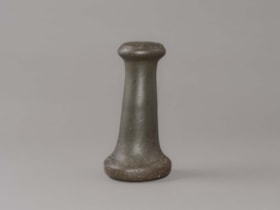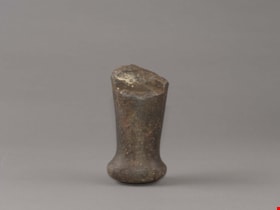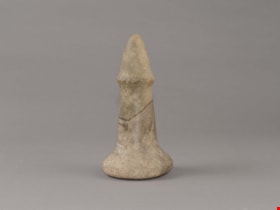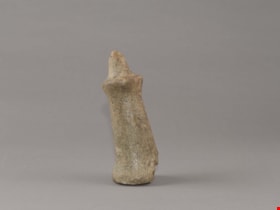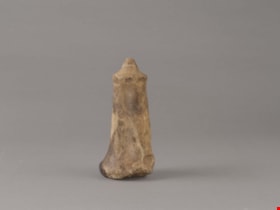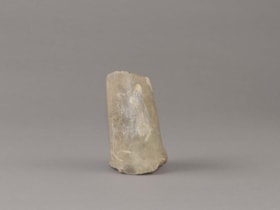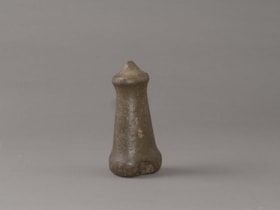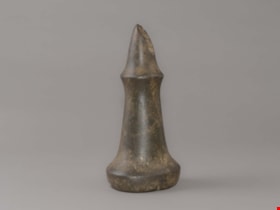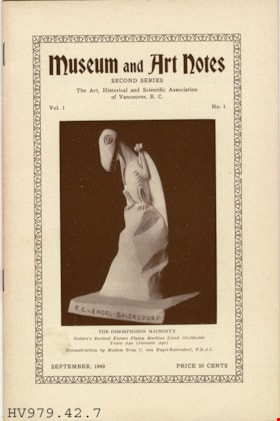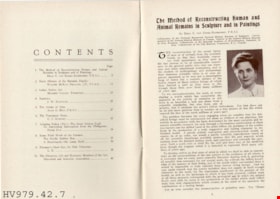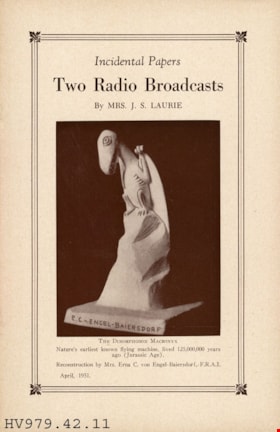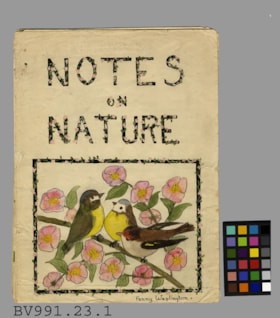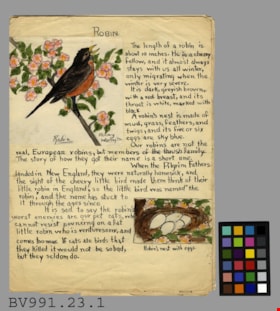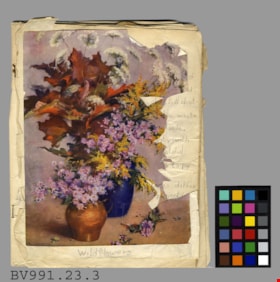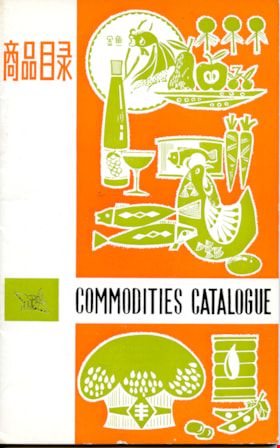More like 'advertisement'
Narrow Results By
Decade
- 2020s 1
- 2010s 1
- 2000s 1
- 1990s 5
- 1980s 5
- 1970s 4
- 1960s 3
- 1950s 6
- 1940s 6
- 1930s 10
- 1920s 11
- 1910s 6
- 1900s 3
- 1890s 3
- 1880s 3
- 1870s 2
- 1860s 2
- 1850s 1
- 1810s 1
- 1800s 1
- 1790s 1
- 1780s 1
- 1770s 1
- 1760s 1
- 1750s 1
- 1740s 1
- 1730s 1
- 1720s 1
- 1710s 1
- 1700s 1
- 1690s 1
- 1680s 1
- 1670s 1
- 1660s 1
- 1650s 1
- 1640s 1
- 1630s 1
- 1620s 1
- 1610s 1
- 1600s 1
- 1590s 1
- 1580s 1
- 1570s 1
- 1560s 1
- 1550s 1
- 1540s 1
- 1530s 1
- 1520s 1
- 1510s 1
- 1500s 1
- 1490s 1
- 1480s 1
Subject
- Archeological Specimen 5
- Artifacts 1
- Buildings - Religious - Temples 1
- Celebrations - Centennial 2
- Ceremonial Artifacts - Totem Poles 1
- Clothing 1
- Construction Tools and Equipment 1
- Documentary Artifacts 11
- Documentary Artifacts - Booklets 8
- Documentary Artifacts - Leaflets 2
- Documentary Artifacts - Magazines 1
- Documentary Artifacts - Maps 1
Person / Organization
- British Columbia Electric Railway Company 1
- Burnaby Centennial '71 Committee 1
- Burnaby Mountain Centennial Park 2
- Burnaby Mountain Park 2
- Burnaby Village Museum 56
- Burton, John 11
- Century Park Museum Association 29
- Copan, Donald Angus "Don" 1
- Damer, Eric 1
- Fleming, Frances "Fanny" Waplington 2
- Foley, John 1
- Fowler, Rod 4
leaflet
https://search.heritageburnaby.ca/link/museumartifact90017
- Repository
- Burnaby Village Museum
- Accession Code
- BV015.35.321
- Description
- leaflet; buff paper with black text reading: "GRAND RALLY / BRITISH COLUMBIA GIRL GUIDES / AGRICULTURAL GROUNDS, DUNCAN / SATURDAY, JULY 8th, 1922"; rally had a programme of sports events, followed by a high tea, and in the evening, a camp fire with entertainment.
- Object History
- Leaflet is a part of scrapbook "Burnaby Girl Guides. -- [1914]-1969, predominant ca. 1920" (BV015.35.164)
- Note in blue ink on scrapbook page reads: "Burnaby Guides attended this Rally".
- Category
- 08. Communication Artifacts
- Classification
- Documentary Artifacts
- Measurements
- L: 22.2 cm W: 13.9 cm
- Country Made
- Canada
- Province Made
- British Columbia
- Names
- Girl Guides of Canada
Images
Documents
sampler
https://search.heritageburnaby.ca/link/museumartifact90018
- Repository
- Burnaby Village Museum
- Accession Code
- BV015.35.334
- Description
- sampler; white textile with frayed edges; mounted on gold paper; purple embroidery floss; "MORSE CODE."; complete alphabet in morse stitched following the format: Latin letter = morse code equivalent; ex. "M = -- --".
- Object History
- Sampler is a part of scrapbook "Burnaby Girl Guides. -- [1914]-1969, predominant ca. 1920" (BV015.35.164)
- Category
- 08. Communication Artifacts
- Classification
- Art
- Object Term
- Needlework
- Measurements
- L: 21.0 cm W: 19.5 cm
- Country Made
- Canada
- Province Made
- British Columbia
- Site/City Made
- Burnaby
- Names
- Girl Guides of Canada
Images
Documents
Interview with John Burton by Lynda Maeve Orr - Track 5
https://search.heritageburnaby.ca/link/oralhistory221
- Repository
- City of Burnaby Archives
- Date Range
- 1860-1932
- Length
- 0:08:48
- Summary
- This portion of the interview pertains to John Burton's description of the Linotype machine, as well as the history of his grandfather, John Foley, founder of the Orangeville Sun newspaper.
- Repository
- City of Burnaby Archives
- Summary
- This portion of the interview pertains to John Burton's description of the Linotype machine, as well as the history of his grandfather, John Foley, founder of the Orangeville Sun newspaper.
- Date Range
- 1860-1932
- Photo Info
- Burton family home, [1945]. Item no. 216-002
- Length
- 0:08:48
- Names
- Foley, John
- Scope and Content
- Recording is of an interview with John Burton at his residence in Surrey by Lynda Mauve Orr, August 24, 1989. This interview focuses on the history of newspaper and printing presses in Canada.
- Biographical Notes
- John Burton was born in 1912 in New Westminster. He went to Second Street School, then Edmonds, then Saint Anne's Convent, and St. Louis College and Connaught before graduating from Burnaby South School in 1930. While at High School, John worked at Cowan's Music Store at 716 Columbia Street in New Westminster on Saturdays and after school. John Burton's grandfather John Foley was the founder of the Orangeville Sun newspaper in Orangeville, Ontario, established in 1861. He ran the paper until his death in 1882, when his son, John Foley Jr. took over as editor and publisher at the age of sixteen. Two of his daughters were involved in the newspaper; Margaret Foley was a regular contributor to the paper, and John Burton's mother was a typesetter. When John Burton was a teenager, he went to Orangeville to learn the trade from his uncle. Unfortunately, he was only there eighteen months when his uncle died December 21, 1932. The family was unable to hold on to the business and the paper amalgamated with the Orangeville Banner newspaper in 1933.
- Total Tracks
- 7
- Total Length
- 0:58:44
- Interviewee Name
- Burton, John
- Collection/Fonds
- Burnaby Historical Society fonds
- Subseries
- Oral history subseries
- Media Type
- Sound Recording
- Web Notes
- Interview was digitized in 2010 allowing it to be accessible on Heritage Burnaby. The digitization project was initiated by the Community Heritage Commission with support from City of Burnaby Council and the BC History Digitization Program of the Irving K. Barber Learning Centre, University of British Columbia. It was recognized by the Heritage Society of BC with an award in 2012.
Images
Audio Tracks
Track five of interview with John Burton by Lynda Maeve Orr
Track five of interview with John Burton by Lynda Maeve Orr
https://search.heritageburnaby.ca/media/hpo/_Data/_Archives_Oral_Histories/_Unrestricted/MSS137-001-4/MSS137-001-4_Track_5.mp3Recording of John Burton - Track 2
https://search.heritageburnaby.ca/link/oralhistory210
- Repository
- City of Burnaby Archives
- Date Range
- 1920-1937
- Length
- 0:09:26
- Summary
- This portion of the recording pertains to John Burton's description of national advertising in early weekly newspapers, with mentions of the Burnaby Post and the Burnaby Broadcast. He also describes the flatbed cylinder press and relates a story of a group of handpress workers who demolish a flatbe…
- Repository
- City of Burnaby Archives
- Summary
- This portion of the recording pertains to John Burton's description of national advertising in early weekly newspapers, with mentions of the Burnaby Post and the Burnaby Broadcast. He also describes the flatbed cylinder press and relates a story of a group of handpress workers who demolish a flatbed cylinder press in order to save their jobs.
- Date Range
- 1920-1937
- Photo Info
- Burton family home, [1945]. Item no. 216-002
- Length
- 0:09:26
- Scope and Content
- Recording is of John Burton discussing the history of the weekly newspaper and of the types of printing presses that have been used in Canada, as well as exactly how their parts function. John appears to be describing printing presses that are in the room with him.
- Biographical Notes
- John Burton was born in 1912 in New Westminster. He went to Second Street School, then Edmonds, then Saint Anne's Convent, and St. Louis College and Connaught before graduating from Burnaby South School in 1930. While at High School, John worked at Cowan's Music Store at 716 Columbia Street in New Westminster on Saturdays and after school. John Burton's grandfather John Foley was the founder of the Orangeville Sun newspaper in Orangeville, Ontario, established in 1861. He ran the paper until his death in 1882, when his son, John Foley Jr. took over as editor and publisher at the age of sixteen. Two of his daughters were involved in the newspaper; Margaret Foley was a regular contributor to the paper, and John Burton's mother was a typesetter. When John Burton was a teenager, he went to Orangeville to learn the trade from his uncle. Unfortunately, he was only there eighteen months when his uncle died December 21, 1932. The family was unable to hold on to the business and the paper amalgamated with the Orangeville Banner newspaper in 1933.
- Total Tracks
- 5
- Total Length
- 0:46:18
- Interviewee Name
- Burton, John
- Collection/Fonds
- Burnaby Historical Society fonds
- Subseries
- Oral history subseries
- Media Type
- Sound Recording
- Web Notes
- Interview was digitized in 2010 allowing it to be accessible on Heritage Burnaby. The digitization project was initiated by the Community Heritage Commission with support from City of Burnaby Council and the BC History Digitization Program of the Irving K. Barber Learning Centre, University of British Columbia. It was recognized by the Heritage Society of BC with an award in 2012.
Images
Audio Tracks
Track two of recording of John Burton
Track two of recording of John Burton
https://search.heritageburnaby.ca/media/hpo/_Data/_Archives_Oral_Histories/_Unrestricted/MSS137-001-2/MSS137-001-2_Track_2.mp3Recording of John Burton - Track 3
https://search.heritageburnaby.ca/link/oralhistory211
- Repository
- City of Burnaby Archives
- Date Range
- 1920-1959
- Length
- 0:09:54
- Summary
- This portion of the recording pertains to John Burton's description of how various presses work, and their use by daily and weekly papers. He describes a press shop, most likely at the Burnaby Village Museum.
- Repository
- City of Burnaby Archives
- Summary
- This portion of the recording pertains to John Burton's description of how various presses work, and their use by daily and weekly papers. He describes a press shop, most likely at the Burnaby Village Museum.
- Date Range
- 1920-1959
- Photo Info
- Burton family home, [1945]. Item no. 216-002
- Length
- 0:09:54
- Scope and Content
- Recording is of John Burton discussing the history of the weekly newspaper and of the types of printing presses that have been used in Canada, as well as exactly how their parts function. John appears to be describing printing presses that are in the room with him.
- Biographical Notes
- John Burton was born in 1912 in New Westminster. He went to Second Street School, then Edmonds, then Saint Anne's Convent, and St. Louis College and Connaught before graduating from Burnaby South School in 1930. While at High School, John worked at Cowan's Music Store at 716 Columbia Street in New Westminster on Saturdays and after school. John Burton's grandfather John Foley was the founder of the Orangeville Sun newspaper in Orangeville, Ontario, established in 1861. He ran the paper until his death in 1882, when his son, John Foley Jr. took over as editor and publisher at the age of sixteen. Two of his daughters were involved in the newspaper; Margaret Foley was a regular contributor to the paper, and John Burton's mother was a typesetter. When John Burton was a teenager, he went to Orangeville to learn the trade from his uncle. Unfortunately, he was only there eighteen months when his uncle died December 21, 1932. The family was unable to hold on to the business and the paper amalgamated with the Orangeville Banner newspaper in 1933.
- Total Tracks
- 5
- Total Length
- 0:46:18
- Interviewee Name
- Burton, John
- Collection/Fonds
- Burnaby Historical Society fonds
- Subseries
- Oral history subseries
- Media Type
- Sound Recording
- Web Notes
- Interview was digitized in 2010 allowing it to be accessible on Heritage Burnaby. The digitization project was initiated by the Community Heritage Commission with support from City of Burnaby Council and the BC History Digitization Program of the Irving K. Barber Learning Centre, University of British Columbia. It was recognized by the Heritage Society of BC with an award in 2012.
Images
Audio Tracks
Track three of recording of John Burton
Track three of recording of John Burton
https://search.heritageburnaby.ca/media/hpo/_Data/_Archives_Oral_Histories/_Unrestricted/MSS137-001-2/MSS137-001-2_Track_3.mp3Recording of John Burton - Track 5
https://search.heritageburnaby.ca/link/oralhistory213
- Repository
- City of Burnaby Archives
- Date Range
- 1850-1950
- Length
- 0:09:14
- Summary
- This portion of the recording pertains to John Burton's description of the galley press and the proofing process. He also discusses job printing (now referred to as commercial printing).
- Repository
- City of Burnaby Archives
- Summary
- This portion of the recording pertains to John Burton's description of the galley press and the proofing process. He also discusses job printing (now referred to as commercial printing).
- Date Range
- 1850-1950
- Photo Info
- Burton family home, [1945]. Item no. 216-002
- Length
- 0:09:14
- Scope and Content
- Recording is of John Burton discussing the history of the weekly newspaper and of the types of printing presses that have been used in Canada, as well as exactly how their parts function. John appears to be describing printing presses that are in the room with him.
- Biographical Notes
- John Burton was born in 1912 in New Westminster. He went to Second Street School, then Edmonds, then Saint Anne's Convent, and St. Louis College and Connaught before graduating from Burnaby South School in 1930. While at High School, John worked at Cowan's Music Store at 716 Columbia Street in New Westminster on Saturdays and after school. John Burton's grandfather John Foley was the founder of the Orangeville Sun newspaper in Orangeville, Ontario, established in 1861. He ran the paper until his death in 1882, when his son, John Foley Jr. took over as editor and publisher at the age of sixteen. Two of his daughters were involved in the newspaper; Margaret Foley was a regular contributor to the paper, and John Burton's mother was a typesetter. When John Burton was a teenager, he went to Orangeville to learn the trade from his uncle. Unfortunately, he was only there eighteen months when his uncle died December 21, 1932. The family was unable to hold on to the business and the paper amalgamated with the Orangeville Banner newspaper in 1933.
- Total Tracks
- 5
- Total Length
- 0:46:18
- Interviewee Name
- Burton, John
- Collection/Fonds
- Burnaby Historical Society fonds
- Subseries
- Oral history subseries
- Media Type
- Sound Recording
- Web Notes
- Interview was digitized in 2010 allowing it to be accessible on Heritage Burnaby. The digitization project was initiated by the Community Heritage Commission with support from City of Burnaby Council and the BC History Digitization Program of the Irving K. Barber Learning Centre, University of British Columbia. It was recognized by the Heritage Society of BC with an award in 2012.
Images
Audio Tracks
Track five of recording of John Burton
Track five of recording of John Burton
https://search.heritageburnaby.ca/media/hpo/_Data/_Archives_Oral_Histories/_Unrestricted/MSS137-001-2/MSS137-001-2_Track_5.mp3Interview with Toki Miyashita by Rod Fowler February 27, 1990 - Track 10
https://search.heritageburnaby.ca/link/oralhistory525
- Repository
- City of Burnaby Archives
- Date Range
- 1989-1990
- Length
- 00:06:41
- Summary
- This portion of the interview is about Toki Miyashita’s description of how Toko Nuburi and his son [Shusei] worked to create the pole carvings in 1989. She also relates that seeing Toko, a man of the north of Japan, explains her own physical characteristics
- Repository
- City of Burnaby Archives
- Summary
- This portion of the interview is about Toki Miyashita’s description of how Toko Nuburi and his son [Shusei] worked to create the pole carvings in 1989. She also relates that seeing Toko, a man of the north of Japan, explains her own physical characteristics
- Date Range
- 1989-1990
- Length
- 00:06:41
- Subjects
- Celebrations - Centennial
- Ceremonial Artifacts - Totem Poles
- Woodworking Tools and Equipment
- Geographic Access
- Burnaby Mountain Conservation Area
- Interviewer
- Fowler, Rod
- Interview Date
- February 27, 1990
- Scope and Content
- Recording is of an interview with Toki Miyashita, conducted by Rod Fowler. Toki Miyashita was one of eleven participants interviewed as part of the SFU/Burnaby Centennial Committee's oral history series titled, "Voices of Burnaby". The interview is about Toki Miyashita’s family’s internment during WWII, her awakening interest in Japanese culture after the war, her subsequent interest in teaching others about Japanese crafts and arts, and becoming a helpful intermediary between Burnaby and visitors from Japan. The interview explores her interest in the Ainu of Japan and their possible link to the aboriginals of BC, her impressions of the Ainu carver Nuburi Toko, and her involvement in the events surrounding the creation of the sculpture “Playground of the Gods” for Burnaby Mountain. The interview also contains interesting details about the art of Japanese flower-arranging. To view “Narrow By” terms for each track expand this description and see “Notes”.
- Biographical Notes
- Toki Miyashita was born in Richmond B.C., ca. 1935, at the Nelson Brothers “fishery”, a second generation Canadian descended from the Oikawa family who settled on Don and Lion Islands (Oikawa-shima). In 1942 the Japanese Canadians in BC were forcibly moved from the coast and their belongings confiscated. Toki Miyashita, her parents, two brothers, and grandparents were first taken to Hastings Park where her father was separated from the family to work in road camps, and the rest of the family were interned in New Denver. Her resourceful grandmother moved the family to land outside the internment camp, growing a large garden from seeds brought with her. In 1946 the family moved to Kamloops and in 1958, after finishing high school, Toki Miyashita moved to Montreal to be with relatives and a small Japanese community. At this time she became interested in Japanese culture and took a Japanese language course at age 22. She learned about Japanese flower-arranging (Ikebana), paper folding (Origami), silk doll making (from a Russian Jew), and how to wear a kimono. She began demonstrating these arts in schools and to other groups, which she continued doing when she, her husband and two young children moved to Burnaby in 1969. Toki Miyashita has been called an unpaid “ambassador” of Japanese culture to the Lower Mainland. She has acted as liaison between Burnaby and her sister city Kushiro in Japan, which involved her in the creation of the Ainu sculpture “Playground of the Gods” on Burnaby Mountain for Burnaby’s Centennial. Toki Miyashita is a recognized Master in Ikebana Sogetsu, a school of flower-arranging, and has served on the board of the Vancouver Ikebana Association. She also served on Burnaby’s Family Court in the 1980s.
- Total Tracks
- 11
- Total Length
- 01:34:10
- Interviewee Name
- Miyashita, Toki
- Interviewer Bio
- Rod Fowler returned to university as a mature student in the 1980s after working about twenty years in the field of economics and computerization in business in England, Europe and Western Canada. He graduated with a BA from SFU in both History and Sociology in 1987, his MA degree in Geography in 1989, and his PhD in Cultural Geography at SFU. He taught courses in Geography, Sociology, History and Canadian Studies at several Lower Mainland colleges, before becoming a full time member of the Geography Department at Kwantlen University College.
- Collection/Fonds
- SFU/Burnaby Centennial Committee fonds
- Transcript Available
- Transcript available
- Media Type
- Sound Recording
- Web Notes
- Interviews were digitized in 2015 allowing them to be accessible on Heritage Burnaby. The digitization project was initiated by the Community Heritage Commission with support from City of Burnaby Council.
Audio Tracks
Track ten of interview with Toki Miyashita
Track ten of interview with Toki Miyashita
https://search.heritageburnaby.ca/media/hpo/_Data/_Archives_Oral_Histories/_Unrestricted/MSS187-017/MSS187-017_Track_10.mp3hand maul
https://search.heritageburnaby.ca/link/museumartifact3392
- Repository
- Burnaby Village Museum
- Accession Code
- BV988.6.1
- Description
- Flat topped stone maul.
- Subjects
- Persons
- Indigenous peoples - British Columbia
- Woodworking Tools and Equipment
- Woodworking Tools and Equipment - Maul
Images
Documents
hand maul
https://search.heritageburnaby.ca/link/museumartifact3393
- Repository
- Burnaby Village Museum
- Accession Code
- BV988.6.2
- Description
- Flat topped stone maul, broken
- Subjects
- Persons
- Indigenous peoples - British Columbia
- Woodworking Tools and Equipment
- Woodworking Tools and Equipment - Maul
Images
Documents
hand maul
https://search.heritageburnaby.ca/link/museumartifact15555
- Repository
- Burnaby Village Museum
- Accession Code
- HV983.32.13
- Description
- Nipple topped stone maul. Nipple topped stone maul. It has a crack through the entire shaft and the two halves look of different colour and stone type. There is a large chip missing along the crack.
- Object History
- The donor was of European decent and was given this maul by an unidentified person. In general, hand mauls are used in woodworking todrive antler wedges or spreading sticks into logs and split planks. They were also used in combination with chisels for detail work. Their presence at an archeological site is viewed as evidence of long term habitations. They are associated with house building, canoe building, housepost and welcome figure carving. Nipple top hand mauls are identified as Marpole Culture (400 BC - 400 AD).
- Country Made
- Canada
- Province Made
- British Columbia
- Culture
- First Nations
- Subjects
- Persons
- Indigenous peoples - British Columbia
- Woodworking Tools and Equipment
- Woodworking Tools and Equipment - Maul
Images
Documents
hand maul
https://search.heritageburnaby.ca/link/museumartifact34041
- Repository
- Burnaby Village Museum
- Accession Code
- BV991.26.1
- Description
- Conical topped stone maul; damaged area on one side; broken area at bottom edge.
- Object History
- Maul was found in the late 1920s by Joseph Theodore Dorman on his property on Cliff Avenue, between Halifax and Broadway. In general, hand mauls are used in woodworking todrive antler wedges or spreading sticks into logs and split planks. They were also used in combination with chisels for detail work. Their presence at an archeological site is viewed as evidence of long term habitations. They are associated with house building, canoe building, housepost and welcome figure carving. Nipple top hand mauls are identified as Marpole Culture (400 BC - 400 AD).
- Country Made
- Canada
- Province Made
- British Columbia
- Subjects
- Persons
- Indigenous peoples - British Columbia
- Woodworking Tools and Equipment
- Woodworking Tools and Equipment - Maul
Images
Documents
hand maul
https://search.heritageburnaby.ca/link/museumartifact34042
- Repository
- Burnaby Village Museum
- Accession Code
- BV991.26.2
- Description
- Nipple topped stone maul. There is a damaged area on one side and the bottom edge is badly chipped. There are blackish oily stains on the side of the maul.
- Object History
- Was found in the late 1920s by Joseph Theodore Dorman on his property on Cliff Avenue, between Halifax and Broadway.
- Country Made
- Canada
- Province Made
- British Columbia
- Culture
- First Nations
- Subjects
- Persons
- Indigenous peoples - British Columbia
- Woodworking Tools and Equipment
- Woodworking Tools and Equipment - Maul
Images
Documents
hand maul
https://search.heritageburnaby.ca/link/museumartifact44533
- Repository
- Burnaby Village Museum
- Accession Code
- BV002.37.6
- Description
- Hand maul, stone; fragment, no top.
- Object History
- Donor's father found the maul in 1946-1947 when excavating a lot at 4203 Norfolk Street. The lot was kitty corner to Schou Street School.
- Subjects
- Persons
- Indigenous peoples - British Columbia
- Woodworking Tools and Equipment
- Woodworking Tools and Equipment - Maul
- Archeological Specimen
- Geographic Access
- Norfolk Street
Images
Documents
hand maul
https://search.heritageburnaby.ca/link/museumartifact44853
- Repository
- Burnaby Village Museum
- Accession Code
- BV002.57.1
- Description
- Nipple topped stone maul. It has a pointed tip and a slight indentation on side of base. There is adhesive residue on bottom of base.
- Object History
- The donor inherited this artifact from his mother, Katherine Maude (Kitty) Peers, who inherited them from her father, Louis Claude Hill. The artifacts were found on his farm, Brookfield Farm, at Douglas Road and Sperling Avenue (now site of Burnaby Village Museum). In general, hand mauls are used in woodworking todrive antler wedges or spreading sticks into logs and split planks. They were also used in combination with chisels for detail work. Their presence at an archeological site is viewed as evidence of long term habitations. They are associated with house building, canoe building, housepost and welcome figure carving. Nipple top hand mauls are identified as Marpole Culture (400 BC - 400 AD).
- Subjects
- Persons
- Indigenous peoples - British Columbia
- Woodworking Tools and Equipment
- Woodworking Tools and Equipment - Maul
- Archeological Specimen
- Historic Neighbourhood
- Burnaby Lake (Historic Neighbourhood)
Images
Documents
hand maul
https://search.heritageburnaby.ca/link/museumartifact44854
- Repository
- Burnaby Village Museum
- Accession Code
- BV002.57.2
- Description
- Conical topped stone maul; damaged by a plow.
- Object History
- The donor inherited this artifact from his mother, Katherine Maude (Kitty) Peers, who inherited them from her father, Louis Claude Hill. The artifacts were found on his farm, Brookfield Farm, at Douglas Road and Sperling Avenue (now site of Burnaby Village Museum).
- In general, hand mauls are used in woodworking todrive antler wedges or spreading sticks into logs and split planks. They were also used in combination with chisels for detail work. Their presence at an archeological site is viewed as evidence of long term habitations. They are associated with house building, canoe building, housepost and welcome figure carving. Flat and conical topped hand mauls are identified as Gulf of Georgia Culture (400 AD - 1800).
- Subjects
- Persons
- Indigenous peoples - British Columbia
- Woodworking Tools and Equipment
- Woodworking Tools and Equipment - Maul
- Archeological Specimen
- Historic Neighbourhood
- Burnaby Lake (Historic Neighbourhood)
Images
Documents
booklet
https://search.heritageburnaby.ca/link/museumartifact17357
- Repository
- Burnaby Village Museum
- Accession Code
- HV979.42.7
- Description
- Museum & Art Notes - Booklet -- [1949]. The Art Historical and Scientific Association publication of Museum & Art Notes. This is Volume 1, Number 1 of the Second Series, September 1949. The front cover features a picture of the Dimorphodon Macronyx model made by Madam Erna C. von Engel-Baiersdorf. This issue has articles on: The Method of Reconstructiong Human and Animal Remains in Sculpture and in Paintings Early History of the Burnaby Family Indian Native Art Sundews The Aleuts of Attu The Trumpeter Swan Achatina Fulica, The Great African Snail Some Field Work of the Curator Palomar's Giant Eye, the Hale Telescope The Directors, Life and Honorary Members of the Art, Historical and Scientific Association.
- Subjects
- Documentary Artifacts
- Documentary Artifacts - Booklets
- Organizations
- Organizations - Art Societies
- Organizations - Historical Societies
- Organizations - Science Societies
Images
Documents
booklet
https://search.heritageburnaby.ca/link/museumartifact17361
- Repository
- Burnaby Village Museum
- Accession Code
- HV979.42.11
- Description
- Two Radio Broadcasts - Booklet -- [1951]. Incidental Papers, Two Radio Broadcasts by Mrs. J. S. Laurie. The front cover features a picture of The Dimorphodon Macronyx reconstructed by Erna C. von Engel-Baiersdorf. The booklet was printed in April 1951.
Images
Documents
booklet
https://search.heritageburnaby.ca/link/museumartifact34033
- Repository
- Burnaby Village Museum
- Accession Code
- BV991.23.1
- Description
- Notes on Nature - Booklet. Handmade booklet by Fanny Waplington called "Notes on Nature". The front cover has a hand painted picture of three birds on a branch filled with pink flowers. The booklet is filled with handwritten pages on birds, plants, trees and insects.
- Object History
- Nature Book was created by Frances Fleming (nee Waplington) while she attended Douglas Road School
- Category
- 08. Communication Artifacts
- Classification
- Documentary Artifacts - - Graphic Documents
- Object Term
- Book
- Colour
- Beige
- Measurements
- 22.5cm x 30.5cm
- Title
- Notes on Nature
Images
Documents
booklet
https://search.heritageburnaby.ca/link/museumartifact34035
- Repository
- Burnaby Village Museum
- Accession Code
- BV991.23.3
- Description
- Wild Flowers - Booklet -- [1925]. School booklet created by Fanny Waplington. The front cover is a cut out illustration of two vases filled with flowers and plants from a magazine. The cover is cut along the right edge. Inside the booklet has handwritten entries about various animals and plants. Most of the entries have a corresponding picture.
- Object History
- Scrapbook journal was created by Frances "Fanny" (Waplington) Fleming while she was a young student.
- Category
- 08. Communication Artifacts
- Classification
- Documentary Artifacts - - Graphic Documents
- Object Term
- Book
- Measurements
- 18.5 x 24.3 cm
- Title
- Wildflowers
Images
Documents
catalogue
https://search.heritageburnaby.ca/link/museumartifact90874
- Repository
- Burnaby Village Museum
- Accession Code
- BV019.6.11
- Description
- Commodities Catalogue; China National Cereals, Oils & Foodstuffs Import & Export Corp; text in English and Chinese; glossy cover; bifold binding with two staples; 52 pages; title page and table of contents; import and export "Branches" in China and Hongkong and Macao Agents listed on inside of back cover; annotations in pen and pencil on last page and inside of back cover.
- Object History
- Publication "Commodities Catalogue", was part of a scrapbook created by Cecil Chue Kan Lee documenting the time he was employed as a Prodcue Buyer for Kelly Douglas and Company Limited and Western Commodities Limited in the 1970s and early 1980s. As a produce buyer for Kelly Douglas, Cecil Lee worked closely with local farmers along Marine Drive and in the Fraser Valley. The Burnaby company was one of the largest food distributors in Canada. In the mid-1970s, Lee was asked to oversee the import of Chinese mandarin oranges into Canada. Until that time, mandarin oranges had come from Japan and were sold in the winter, especially at Christmas. When the Japanese market could no longer keep up with demand, Kelly Douglas looked to China. The company relied on Lee’s cultural knowledge to build this very profitable part of their business.
- Reference
- The first few pages and the last page of this publication are available for viewing on Heritage Burnaby. Contact Burnaby Village Museum to view entire content.
- For other records in this collection see: Business records series of Julie Lee and Cecil Lee family fonds
- Category
- 08. Communication Artifacts
- Classification
- Advertising Media
- Object Term
- Catalog, Sales
- Country Made
- China
- Site/City Made
- Peking
- Title
- Commodities Catalogue
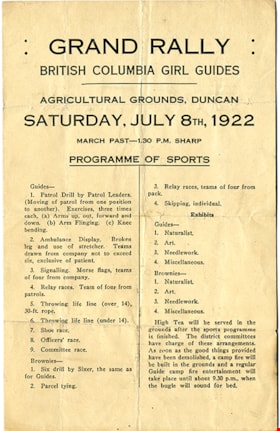
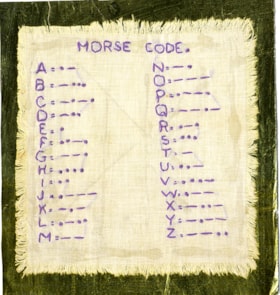
![Burton family home, [1945]. Item no. 216-002 thumbnail](/media/hpo/_Data/_Archives_Images/_Unrestricted/205/216-002.jpg?width=280)
